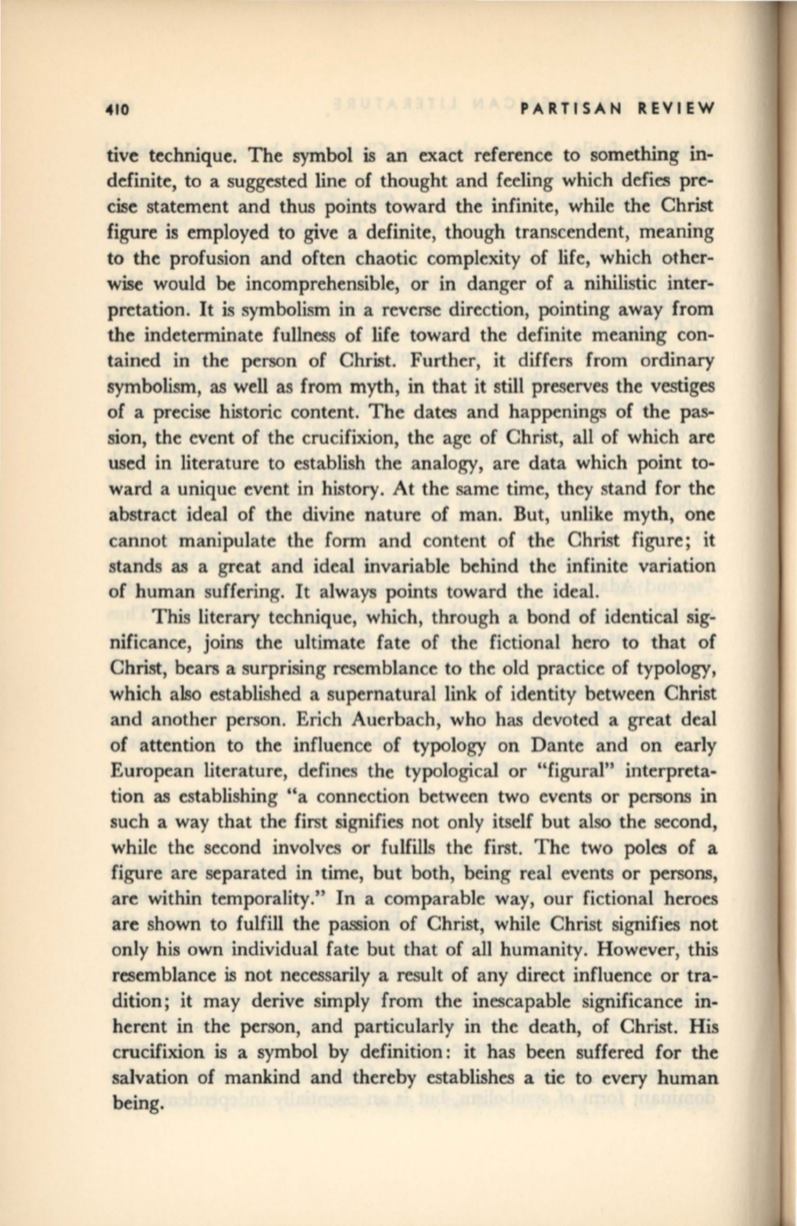
410
PARTISAN REVIEW
tive technique. The symbol is an exact reference to something in–
definite, to a suggested line of thought and feeling which defies pre–
cise statement and thus points toward the infinite, while the Christ
figure is employed to give a definite, though transcendent, meaning
to the profusion and often chaotic complexity of life, which other–
wise would be incomprehensible, or in danger of a nihilistic inter–
pretation. It is symbolism in a reverse direction, pointing away from
the indeterminate fullness of life toward the definite meaning con–
tained in the person of Christ. Further, it differs from ordinary
symbolism, as well as from myth, in that it still preserves the vestiges
of a precise historic content. The dates and happenings of the pas–
sion, the event of the crucifixion, the age of Christ, all of which are
used in literature to establish the .analogy, are data which point to–
ward a unique event in history. At the same time, they stand for the
abstract ideal of the divine nature of man. But, unlike myth, one
cannot manipulate the form and content of the Christ figure; it
stands as a great and ideal invariable behind the infinite variation
of human suffering. It always points toward the ideal.
This literary technique, which, through a bond of identical sig–
nificance, joins the ultimate fate of the fictional hero to that of
Christ, bears a surprising resemblance to the old practice of typology,
which also established a supernatural link of identity between Christ
and another person. Erich Auerbach, who has devoted a great deal
of attention to the influence of typology on Dante and on early
European liter.ature, defines the typological or "figural" interpreta–
tion as establishing "a connection between two events or persons in
such a way that the first signifies not only itself but also the second,
while the second involves or fulfills the first. The two poles of a
figure are separated in time, but both, being real events or persons,
are within temporality." In a comparable way, our fictional heroes
are shown to fulfill the passion of Christ, while Christ signifies not
only his own individual fate but that of all humanity. However, this
resemblance is not necessarily a result of any direct influence or tra–
dition; it may derive simply from the inescapable significance in–
herent in the person, and particularly in the death, of Christ. His
crucifixion is a symbol by definition: it has been suffered for the
salvation of mankind and thereby establishes a tie to every human
being.


